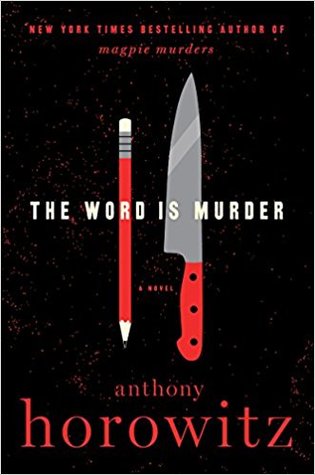The Sentence Is Death Anthony Horowitz (2019)
I’m unabashedly a fan of Anthony Horowitz’s mystery novels. On this blog I’ve reviewed his 2017 offering, Magpie Murders, as well as the first of his metafictional Daniel Hawthorne mysteries, The Word is Murder (2018). With The Sentence Is Death, Horowitz presents the second volume that features the private detective Hawthorne, a former police officer now hired by the police to help on particularly challenging murder cases.
As with The Word is Murder, The Sentence Is Death features as first-person narrator a character named Anthony Horowitz, who bears a startling resemblance to the real-life Anthony Horowitz in his work life and in his family configuration—hence, metafiction. Watch for zingers that play off the insertion of the author into his own fiction. For example, the fictional Horowitz notes that Jill Green, actual wife of the author Horowitz, “has made it clear that she’s uncomfortable being a character in my book. Unfortunately, truth is what it’s all about.” (303) Uh, “truth” in this case is a fictional narrative about a fictional murder.
The case involves the murder of a prominent divorce lawyer in London, with red herrings and potential suspects abounding. Key clues include an overheard doorway conversation shortly before the murder and the number “182” painted on the wall near the corpse. Throughout his writing career the author Horowitz has been captivated by word play—mistaken similar names, anagrams, homonyms, crosswords, multiple meanings, and such. Word play often has an important plot function in the episodes of Foyle’s War, the World War II mystery series (2002-2015) that he wrote for British television. Fictional Horowitz also loves words, as he transcribes the details of the murder case that Hawthorne is investigating in The Sentence Is Death. Hawthorne says to fictional Horowitz, “You’ll choose all the right words and you’ll make it come to life. There’s no way I could do anything like that. Which is why it’s such a great partnership. I do the legwork. You do the rest.” (358)
Fictional Horowitz also chastises writers who break the “fair-play rule” of mysteries: “Whenever Hawthorne saw anything or worked something out, he deliberately kept it from me as if the whole thing was some sort of game. This is often the case in detective stories and I always find it infuriating . . .” (164-65) Of course, author Horowitz leads his readers down many cul-de-sacs before he reveals the solution to the crime. This is despite his avowed approach: ”In a museum, a department store, a theatre, a Tube station, I’ll find myself wondering what goes on behind those locked doors. I sometimes think that it’s actually a good definition of creative writing: to unlock doors and take readers through to the other side.” (131) Multiple doors in The Sentence Is Death open and shut and then open again.
Mystery lovers, don’t miss this one.



